Chironomid Flies Chironomidae species
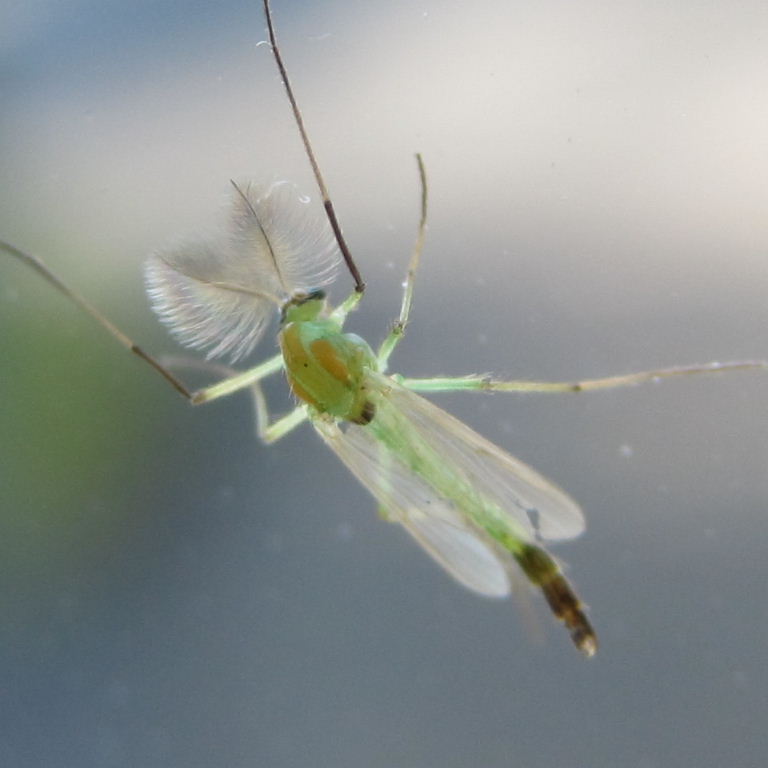 Male with feathered antennae
Male with feathered antennae
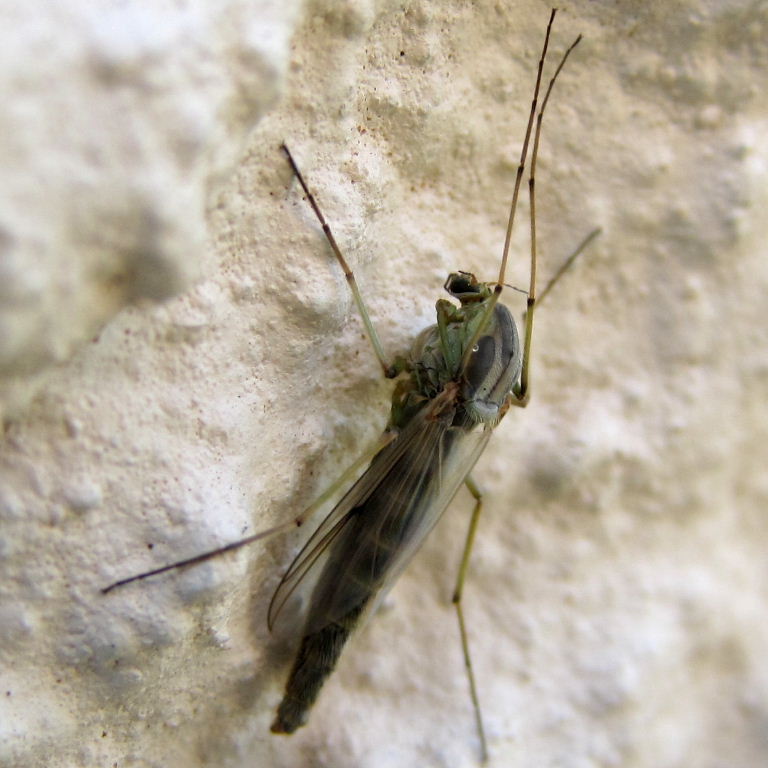 Female without feathered antennae
Female without feathered antennae
Chironomid Flies (pronounced KaiRONomid) are also called Non-biting Midges. They are often found around water since their aquatic larvae,
called Bloodworms, live at the bottom of ponds, lakes, streams and rivers. Since the fly hatches from its pupa on the water surface
and many are then eaten by fish, imitation chironomids are often used in fly fishing.
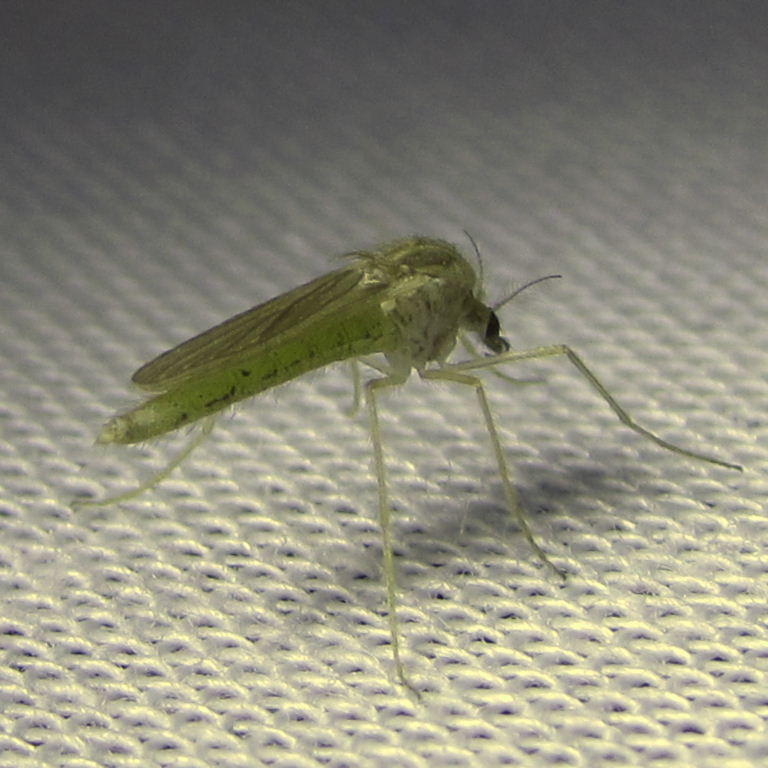


The poor, non-biting chironomids get a bad press since many, especially the Chironomus
and Stenochironomus species, look like mosquitos. Breeding by water and attracted to light,
many are killed by traps/zappers intended for mosquitos. With their hunched appearance, many are swatted and sprayed as mosquitos.
(The male mosquito also has feathery antennae, the female doesn't.)


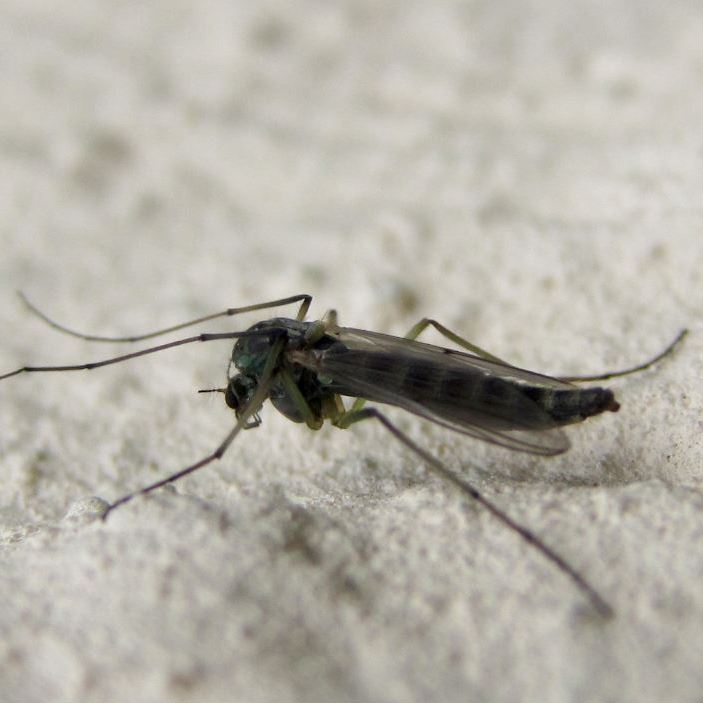
One key difference, only visible at close range, are the mouthparts: the female doesn't have
the long proboscis for piercing skin, - although the palps can sometimes be mistaken for this. (Male mosquitos
don't bite anyway.)
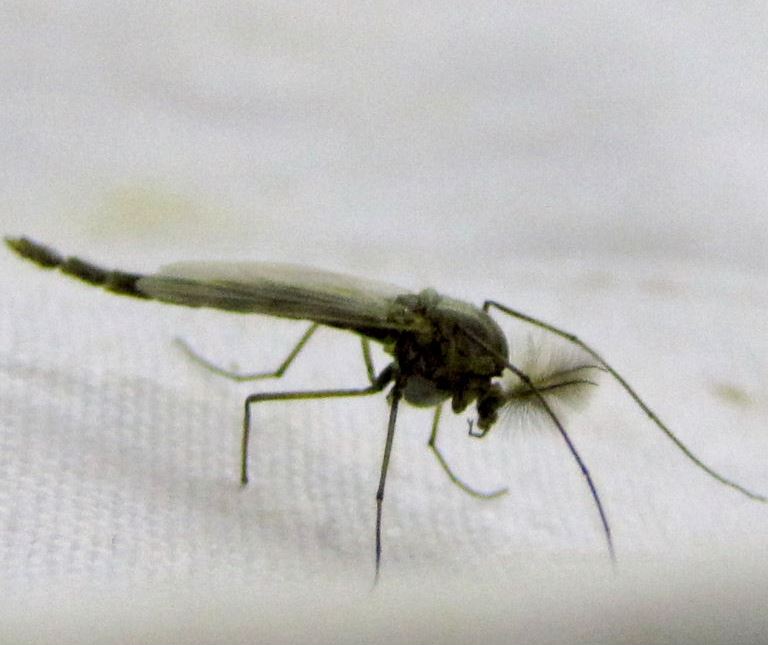
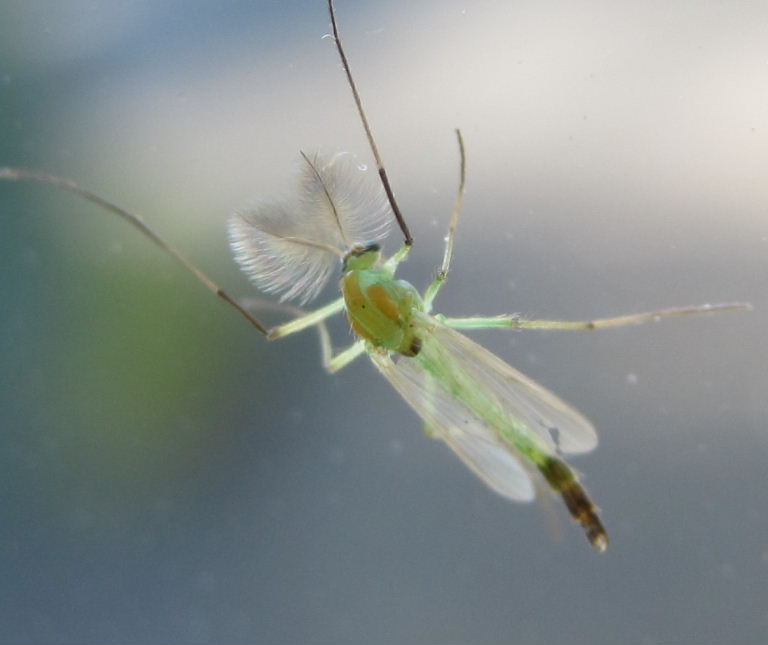

The other key and more visible difference is the length of the wings: the chironomid's wings do
not cover the length of the abdomen whereas those of the mosquito do (unless the female of some species is very full of blood).
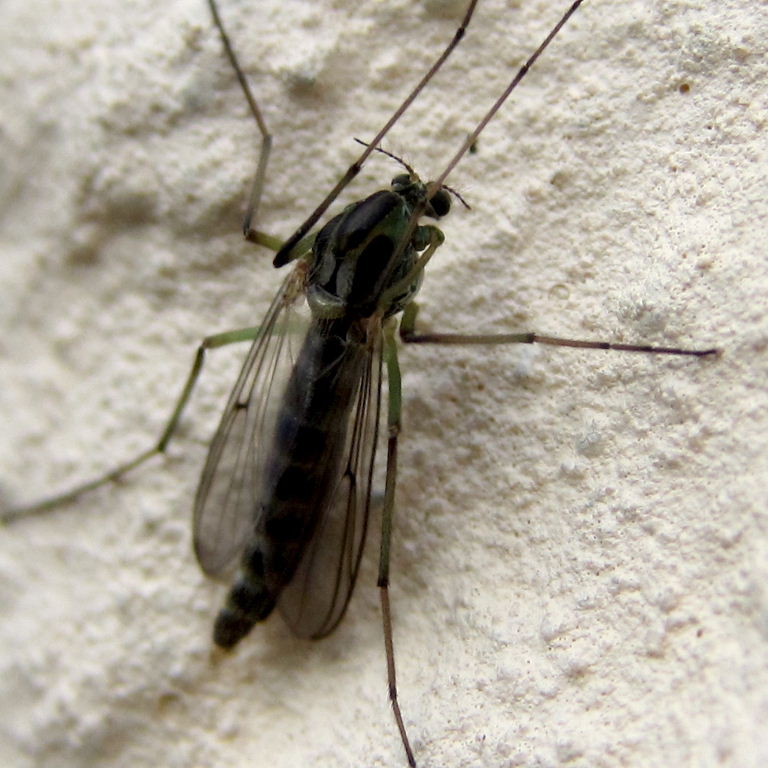
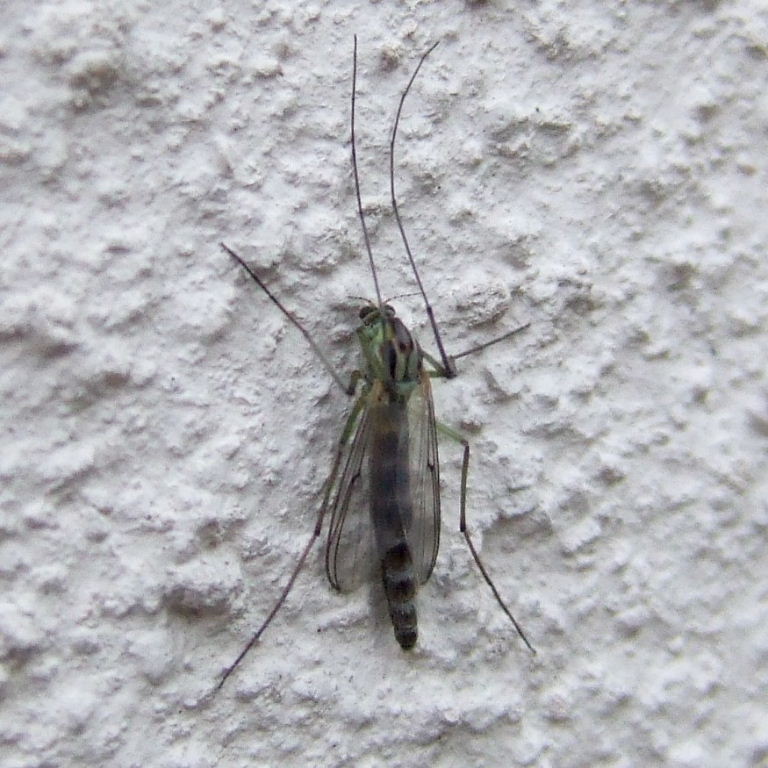

This particular and common species is Chironomus plumosus, also called the Buzzer Midge.
Chironomid flies are not only an important food for freshwater fish but their bloodworm larvae are food for many fish,
amphibian and invertebrate species.



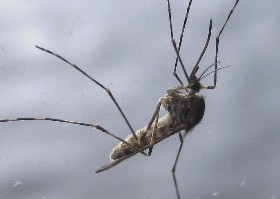 Mosquito
Mosquito